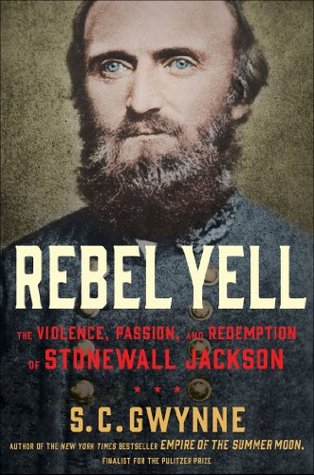More on this book
Community
Kindle Notes & Highlights
by
S.C. Gwynne
Read between
October 8 - October 26, 2018
Jackson as college professor in 1857: He was the most peculiar of teachers: a humorless, puritanical, gimlet-eyed stickler for detail. He taught the toughest course at the Virginia Military Institute.
Robert E. Lee: He and Jackson formed an extraordinary partnership that changed the course of the war. In their stunning victories at Second Manassas and Chancellorsville they demonstrated a high-command teamwork not previously witnessed on either side.
James Longstreet: He and Jackson were Robert E. Lee’s top lieutenants. He was a solid fighter whom Lee called his “old warhorse.” While he inspired respect from the enemy, his rival Jackson inspired fear and awe.
James Ewell Brown “Jeb” Stuart: The stiff, reserved Jackson and the ebullient, outgoing Stuart were completely different personalities but the best of friends. Stuart and his cavalry were Jackson’s eyes and ears on his most famous marches.
Union secretary of war Edwin Stanton: Jackson’s military victories repeatedly thwarted Stanton’s war plans. After Jackson’s spectacular victory at Winchester, Stanton seemed to come completely unhinged, sending an SOS to northern governors to send troops to save Washington, DC, from Jackson’s army.
The wartime general: In November 1862, following the Battle of Antietam, Jackson was photographed in Winchester. Note the wrinkled and weather-beaten condition of his uniform.
The last photograph: Taken less than two weeks before his mortal wounding at Chancellorsville, it shows a man physically transformed from his years in Lexington. His wife thought he was “much more handsome.”
The house at Guiney’s Station where Stonewall Jackson died. He was taken here after being accidentally shot by his own men. Though his arm was amputated, he seemed to be recovering but contracted pneumonia and died a few days later. His last words were “Let us cross over the river and rest under the shade of the trees.”
Jackson’s death mask: It was made on May 11, 1863, after Jackson’s body had been taken by train to Richmond. His gaunt, emaciated face shows the effects of the pneumonia. ACKNOWLEDGMENTS I would like to express my gratitude and appreciation for the help given me on this manuscript by Peter Cozzens, John Hennessy, and Robert K.


